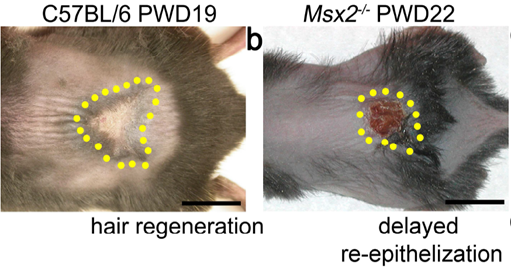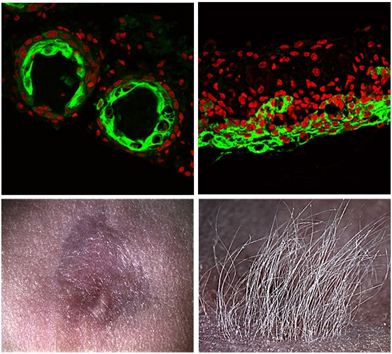Integrative Stem Cell Center | Excellence
Excellence

In terms of skin regeneration, the center recently made significant achievements in how progenitor cells or stem cells formed organoids by self-organization. The research team led by Fellow Cheng-ming Chuong, the honorary director of the center, combined with cell biology, biophysics, bioinformatics, mathematics, microscopy, and other disciplines, and published the research results in PNAS by integrating those produced by several international research teams.

The center's project assistant professor Dr. Ming-hsing Lei as the first author of this paper observed that cells could form hair follicles from more than 500 time-lapse photographs through six-phase self-organization: dissociated cells, cell aggregates, polarized cysts, cyst coalescence, planar skin, and hair-bearing skin. The team led by Fellow Cheng-ming Chuong not only found the molecular mechanism of hair follicles formed by cell self-organization, but has successfully induced adult cells that originally lost the regeneration capacity to regenerate hair. This study provides a new strategy to stimulate hair growth in patients with alopecia. (PNAS, Aug.7, 2017).

